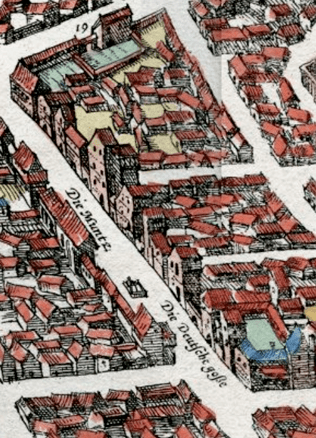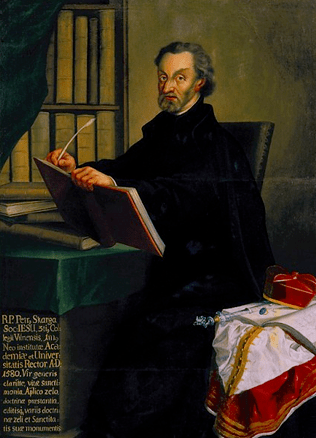The Ideas of the Ecclesiastical Union of Florence in Lithuania. The letter of the GDL’s Orthodox faithful to Pope Sixtus IV (1476)
The agreement that reunited Greek and Latin Catholic Churches was signed 6 July 1439 during the Ecumenical Council of Florence. The deal followed the prolonged and turbulent discussions between the representatives of Western and Eastern Churches. Both sides agreed that the Pope in Rome is head of all Christians and superior to four other Patriarchs residing in Constantinople, Alexandria, Antioch, and Jerusalem. They successfully resolved the theological division concerning the origins of the Holy Spirit by approving the wording of the Catholic Church according to which the Holy Spirit proceeds from God the Father and God the Son (the Eastern Churches teach that the Holy Spirit proceeds from God the Father through God the Son). Both Churches approved all rites and sacraments as licit and rightful despite the differences in the ritual forms they are performed. The union proved short-lived as the Patriarch of Constantinople soon opted out with the other Patriarchs of Eastern Churches following the suit. Despite that the vision, alive nowhere but in paper, has preserved its allure in the dualistic state, the Grand Duchy of Lithuania.
The 15th century saw as many as six attempts to forge the ecumenical union: in 1418, 1434, 1439, 1458, 1476 and 1499–1501.
Provided the union was brought to being, the rulers of Lithuanian could be able to create a confessionally homogenous country, the Catholic state. The union would have enabled the Orthodox nobility to become full-fledged members of the Catholic community, while the Orthodox clergy would have turned into hierarchs of the dominating Catholic Church while retaining their rites and traditions and avoiding the depressive status of second-class Christians.
All the attempts to materialise the ecumenical union in Lithuania failed due to international or internal reasons. They had a profound influence, however, on structural and directional changes within the Orthodox Church and the Orthodox community of the GDL. Several Orthodox aristocrats and hierarchs of the Orthodox Church of the GDL wrote a letter to Pope Sixtus IV in 1476. Historians have since been arguing over its authenticity; some of them maintain that the letter was indeed written in the 15th century, while others claim it to be the fake from the early 18th century. Nevertheless, the issue of authenticity is much less important compared to the problems of inter-confessional relations raised in the letter as they remained crucial throughout the entire 16th century and eventually prompted the implementation of the ecumenical union in 1596.
The ruler of kings and emperors
In 1476, Orthodox clergy elected the Bishop of Smolensk Misail Pestrutski the Metropolitan of Kiev and all Rus. Simultaneously they wrote a letter to Pope Sixtus IV in which they declared their approval of decisions made by the Ecumenical Council of Florence and asked him to consecrate the new elected metropolitan. Hierarchs of the Orthodox Church discussed the ecumenical union and maintained cooperation ties with the Roman Curia long enough to realise that the pope is one of the most influential universal political forces in Europe. It is the pope who anoints emperors and kings. The pope is the highest legislator; he is also the defender and keeper of piece in the Christian world. The pope has the power to excommunicate emperors and kings, i.e. to seclude them from the Christian community. He has the spiritual power bestowed unto him by God that is higher compared to any political power of any ruler: “God the Lord himself has exalted you over all people of the world (…). You are ruling the entire Christian world (…), you possess the heavenly gift of God, that of the holiest blessing on Earth by means of which you will overcome all the maladies of the world.” The apprehension of the papal authority reveals that Orthodoxes of the GDL considered themselves an integral part of the Catholic Europe. It was the Pope in Rome rather than the Patriarch of Constantinople who divided in 1458 the territory of the Kievan Metropoly that was spreading over the lands in the GDL and Muscovy according to its political subordination thus implementing the plan by Grand Duke Vytautas who sought similar changes in the 15th century. It was in 1458 that Lithuanian Orthodoxes recognized Gregory II Bulgarian, the predecessor of Misail Pestrutski consecrated by the pope, as their rightful metropolitan and obeyed his authority.
Therefore, the real spiritual authority of the head of the Orthodox Church, the Patriarch of Constantinople, has been dwarfed by the power of the pope.
A dispute over the form of the rite
It is very unlikely that the patriarch who then resided in Constantinople, the city occupied by Turks, was in a position to solve the problem of widening division between Catholics and Orthodoxes in Lithuania. The intolerance of Catholics of the GDL towards Orthodoxes gradually became visible in the second half of the 15th century. The change of generations was behind the phenomenon. Grandchildren of the aristocrats who fought together with Vytautas were brought up surrounded by Catholic spirit. Catholicism became an integral part of their worldview.
Aristocrats started using a negative term, a schismatic (Greek for a breakaway), in their language to name Orthodoxes.
Stanisław Hlebowicz, the voivode of Polotsk, does not even refer to the Orthodox Church as to the Christian one when he terms it “a synagogue of Ruthenian schismatics” in his document regarding the donation of lands to the Catholic Church in Polotsk. A Ruthenian nobleman Alexander Soltan, who had confessed the decrees of the Ecumenical Council of Florence before the pope in Rome, became an object of public insult by the priest of Vilnius Cathedral while preparing to receive the Blessed Sacrament as the priest called him a false Christian: “The mongrel who failed to rebaptise dares to approach the God’s table.” Even though the Ecumenical Council of Florence has recognised the rightfulness of the formulas of baptism and rites used by the two churches, the aforementioned facts reveal that Lithuania showed little tolerance to rites different from these used by Catholics and considered their otherness as a barrier to join the Christian community. The aforementioned letter by the Orthodox clergy displays the situation: “In our lands [they] are trying to snatch people away from our Church and to baptise them for the second time saying that is what the Holy Father has ordered them to do.” The fact of rebaptism reveals the importance of forms of rites for the mediaeval people. Baptism was the act of socialisation through which a person would join the Christian community. The society was obviously more concerned with the ritual aspects of baptism, the way the act is performed, rather than its theological elucidation. The act was considered rightful only when its ritual was correct. The act performed in any other manner was considered wrongful and incorrect.
The essence of the conflict was the form of the ritual rather than its theological interpretation.
Notes on Muscovite Affairs (Latin: Rerum Moscoviticarum Commentarii), the 16th-century book by the envoy of the Holy Roman Empire Sigismund von Herberstein (1486–1566), discloses the importance of forms of rituals to the lay people as the author dedicates the entire chapter to the baptism rites of the Orthodox Church. The author wonders at the fact that an Orthodox person must be immersed in water three times, while a Catholic is just sprinkled with water during baptism. The viewpoint that the other form of the ritual is wrongful led to the idea that the Orthodox Church itself was heretical and non-Christian.
When “head” of the Christian world falls out with “ribs”
The authors of the letter describe in hyperbolised forms the negative attitudes of the Catholic community towards the Orthodox: “We have heard that certain people slander us unto Your Holiness by claiming that being Orthodoxes we are false Christians and by vituperating us in every manner. (…) Throughout our lands, most of those who call themselves shepherds and belong to the Western Church, are trying to tend the herd with rage but they only disintegrate it by doing so. They are bringing to court, imprisoning and torturing those who refuse to obey; while dealing with others they are trying to draw them into their faith which they eventually ruin with their jealous ire. The unwise shepherds are intimidating people by yelling at them and banishing them wrongfully from their communities or by segregating them. They strike others’ heads with club and kill them. Possessed with rage, they kick other people with their feet and break their backbones or ribs.” The accidents like these would encourage Orthodox to look for their own place in the Catholic world. They identified themselves as a Christian stronghold in the north that protects Christian values in the farthest frontier of the Christian world. The authors of the letter use a popular mediaeval metaphor of body when they call themselves “the ribs” of Christianity: “Devoutly we live in fertile and beautiful northern lands, the lands that are the ribs of the north.” They have been given to Christians so that “Devil the hangdog, the prince of darkness, the earthly evil is not able to build his throne in our northern lands and to become equal to the Supreme; this is the reason why God the Lord has given us this land.”
By using the metonymy of the body, they are trying to demonstrate that the Christian world that God created is diverse, but there is unity in that diversity: “Christ’s body is undivided although it has many members; they all form a single body, just like we are inside a single body. (…) A leg is not an arm, yet they belong to the same body, while an ear is not an eye, yet they belong to the same body. (…) God the Lord has created an undivided body consisting of many members. The members are numerous yet they are in no conflict between themselves.”
The ecumenical union could become a safe haven where confessional barriers could be destroyed. The society, however, saw unity as unification rather than diversity and that proved the major obstacle on the way to implementing the decrees of the Council of Florence. Popes wanted the union that was universal and not limited to the territory of the GDL. This is why the authors of the letter never received any answer.
Remigijus Černius



